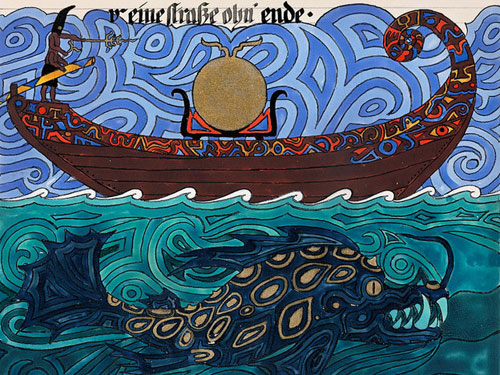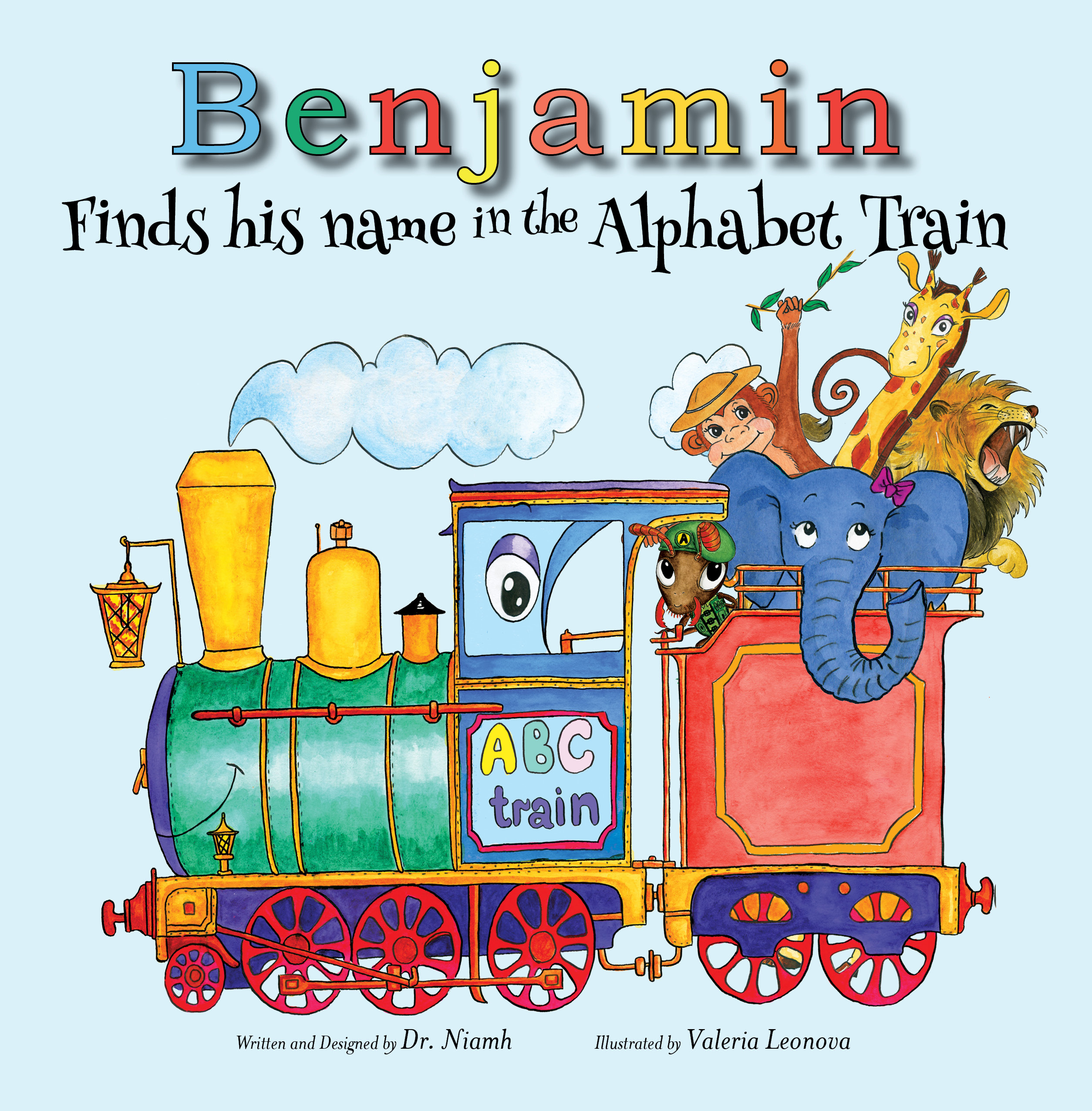DreamWeaver’s Corner Part 2: Introducing The Shadow By Dr. Niamh Clune
“Would some Power the gift that give us to see ourselves as others see us!” Robert Burns.
When we hear people throwing around the psychological term, The Shadow, what does it mean? The answer is not simple. And should we wrestle with the complex Jungian theory, understanding will elude us. So, I will present one simple idea, which should be allowed to germinate, take root, and grow into a stupendous blossoming of consciousness (we hope).
Here goes then…
Simply…The Shadow or “shadow aspect” describes all those traits and tendencies of which we are entirely unconscious. Read that sentence again… entirely unconscious. That means, step one is to first acknowledge its existence.
I have a shadow, you have a shadow, everyone has a shadow. Wherever we go, it follows. There is no escape. The more we run from it, the more it chases us. In that Shadow, are all the nasty things about ourselves, the traits and tendencies that the conscious ego will not recognise. Let’s face it, it’s hard to acknowledge the least desirable aspects of our natures, things about us that would cause shame, catch us red-handed, make us squirm should we see ourselves as others see us. We disown the-less-than-glorious-traits that make us fall from hero to being merely mortal, human, imperfect, raging, lusty, greedy, self-seeking, self-important, self-indulgent, power-hungry, judgemental, jealous, possessive etc., etc. Hence, we deny, reject, repress such unworthy traits and project them instead onto others. It is easy to blame others for what we despise in ourselves. Seeing Shadow traits in someone else makes us angry, presses our buttons, makes us react, makes us feel righteous indignation, raises us to superior. Because we do not make friends with our imperfections, Shadow traits are; therefore, mostly negative.
This doesn’t have to be the case. Positive tendencies may also remain hidden in one’s shadow. If, for example, a person suffers from low self-esteem, there may be a source of untapped strength or unrecognised potential hidden in the shadow also, which, when acknowledged, becomes a source of personal transformation. Those who quest for self-actualisation or individuation seek to befriend shadow traits, to tap into them as a source of creativity, to integrate them into a fully conscious, healthy wholeness. “Everyone carries a shadow,” wrote Jung, “and the less it is embodied in the individual’s conscious life, the blacker and denser it is.”
In spite of the shadow being the reservoir of human darkness, or perhaps because of it, the shadow is often a powerful source of creativity, as when we tap into our dark side, we tap into the true spirit of life…the wildness in us, the passion and the power in us, the trickster not afraid to upend the status quo, the raging one ready to move mountains to follow a belief, the angry one ready to lead a revolution, the fool ready to leap off the precipice into the unknown and take a chance, the seeker of power who becomes a leader of others, the rejected, lusty one who writes the great love story.
As writers and artists, we often sojourn in the realm of The Shadow, plummet into personal darkness, explore the hidden recesses of not only the personal unconscious but the Collective Unconscious. This journey and subsequent Self discovery helps develop consciousness. In knowing and befriending Shadow, we are enabled to grow in understanding of others, deepen compassion, become more whole and give greater value to the Light. Simply: we awaken our hearts. We cannot blame others for what we discover in ourselves; forgiveness is made easy, being judgemental is transformed into being understanding. This does not happen through willed acts of covering over things with transcendental elegance, but through genuine acts of heart-felt empathy.
Back to the discovery of Shadow through dreaming: The Shadow speaks in dreams through those nameless, faceless figures/animals who chase us, try to kill us, appear as nightmares, fill us with fear and shame. Nightmares are good! They mean Psyche is speaking, offering us a chance to grow. All those fearful images are merely representations of hidden, Shadow aspects, those traits or tendencies that help make up the whole truth of who we are.
Copyright Niamh Clune 2013



I enjoyed reading your thoughts on the Shadow, Really written well, Niamh. Acknowledging the shadow/unconscience is the biggest step towards becoming whole.
LikeLike
Many thanks, as ever, Patricia for your support.
LikeLike
I was most happy to learn that something good can come of knowing and brefriending shadow after all. Even a source of transformation to forgiveness and understanding. This then shows a good side to the dark side making it a little less intimidating. Love this series Niamh…so very interesting. Your knowledge on the subject makes it so!
LikeLike
Many thanks indeed, DiAnne. It is worth doing when people read it.
LikeLike
Reblogged this on DiAnne's Place II.
LikeLike
Thank you for reblogging this, DiAnne.
LikeLike
Powerful! Thanks so much.
LikeLike
Thank you, Darlene.
LikeLike
Hi, Niamh! I feel as if I should know shadow traits by now but,
maybe I don’t. If only others can see such characteristics in me, then I have to depend on others sticking their neck out – to tell me, and to risk insulting me. Or not, for as you say, positive traits can also be unconscious to one’s self.
Is it possible that these shadowy traits can be compared to our ‘sinful nature’? You know, “The spirit is willing, but the flesh is weak.” Well, maybe not, since those are all considered negative traits.
Have you ever told folks (during analysis) about unconscious traits they hold? Could you give an example of someone who went on to acknowledge and understand said traits, and ‘good’ was the end result?
I once dreamed of a bear approaching me as I was up a tree. It came close and looked up, but then just turned around a walked away, as if I wasn’t worth the trouble.
Thanks ahead of time for your help, and for this series!
Peace and luvz, Keith
LikeLike
We recognise shadow traits through many different routes too numerous to go into here. But a tell-tale sign is if we find ourselves emotionally reacting to someone else and seeing those negative traits in them. Another is through dreams. I like your dream of the bear, and like every other dream, it can mean many things, as dreams are paradoxical. The bear may represent a powerful instinct about something…you may be cut off from it, hence it turns away…It may be a creative force within your psyche that you could tap into. What does the bear mean to you? What qualities do you associate with it? This is where you will begin to understand your dream. The bear is part of you. I would hesitate to go into more detail here. I can only give you pointers. And when for example, we acknowledge rage, (should we discover it. Most people repress their anger.) We can then channel it creatively rather than it unknowingly spilling out inappropriately…These are the ‘sins’ of which you speak, but this is a more creative and less judgemental way of transformation through acknowledgement rather than repression. Basically, acknowledging shadow traits, frees up psychic energy and expands our consciousness. Sorry, I can only be vague without personal interaction.
LikeLike
Thank you, Niamh! You’re brief was to the point. 🙂
I’m pretty sure I understand what you’re saying.
I can’t say I’ve ever written from a raging, cursing,
and abusive viewpoint. Well, maybe once, when
I put words into the mouth of an intelligent gorilla,
who raged about his slavery, and mankind in general.
“A Fairy Tale Day At The Zoo” was written shortly
after BP’s big oil spill. I used one of their ’employees’
for my main character, and took him for quite the
trippy episode through the zoo as payback. Short story,
but anywhoo, perhaps, I should lash out a bit more. (?)
Keith may have to take responsibility for that task, tho.
😉 I finished your book today, btw. More later on that. Cheerz! UT
LikeLike
I think what I am saying ios that we need to connect with those parts of ourselves before we can use them as a source of creative energy. otherwise we are detached. But I love your comment. And WoW1 Glad you have managed to get through my book! lol! Not an easy read and not for the faint-hearted… But I go into all of this in great depth in the book.
LikeLike
Working on the “shadow” and hoping to understand. I realize that some of my more intense art comes when the shadow is sitting on my shoulder or pulling on my mind trying to overwhelm it. I am trying to get to know and accept what the shadow has to offer. I think when light and the shadow struggle is when my muse is the most active. So I guess I must thank it or him for being such a pain, literally, b/c when he is around that is when the pain is the most intense. But then I find a way of healing the pain through working with him to exorcise in my works of creating. Then the pain subsides and becomes what I call the good pain. There really is a difference between the two. Love you writing on this subject, Trying to be less intellectual and more on the feeling level in understanding the “shadow.” I do realize what you are saying that the shadow comes from the unconscious but I feel that the muse does also but they somehow communicate on a subliminal level almost putting me under their control so they can transfer what they want to say to me will come through unto the page or into my art. Thank you Niamh for being the Dreamweaver. 🙂 jk
LikeLike